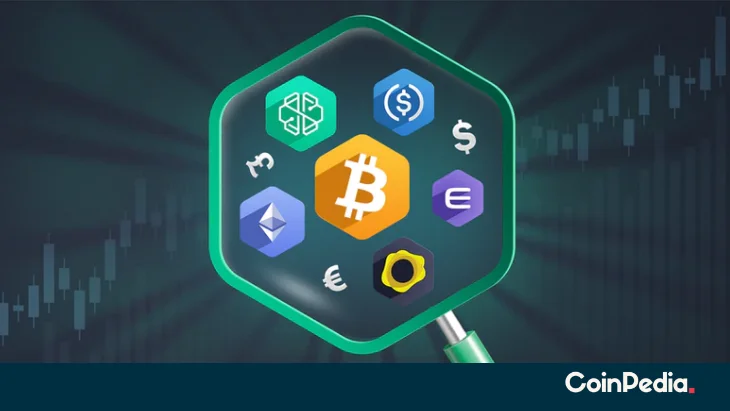Bitcoin vs. Ripple: What’s the Difference?
Bitcoin vs. Ripple: An Overview
From the exterior, the cryptocurrency investing universe seems restricted to bitcoin. As the most well-known cryptocurrency, bitcoin is the king in market capitalization and overall traction with investors.
But there are several other options for those inquisitive in diversifying their portfolio and experimenting with coins that offer a different take on the concept of digital currencies. Ripple’s XRP is one of them. In July 2021, the cryptocurrency ranked sixth in terms of total market cap. Let’s take a closer look at what differentiates XRP from Bitcoin and other top digital tokens.

Bitcoin
Bitcoin works on a public blockchain ledger that supports a digital currency used to enable payments for goods and services. The bitcoin network is based on the blockchain concept, a public ledger of confirmed transactions and record keeping.
Miners verify transactions on an enduring basis and add them to the Bitcoin blockchain. In exchange for their time and the computing power required to validate the ledger in this way, miners are rewarded with BTC upon successfully validating transactions.
Ripple
XRP is the native cryptocurrency for products developed by Ripple Labs. Its outcomes are used for payment settlement, asset exchange, and remittance systems that work more like SWIFT, a service for global money and security transfers used by a network of banks and financial intermediates. XRP is pre-mined and uses a less hectic method of mining when compared to Bitcoin.
Must Read Guide: Witnessing the Continued Rise in Popularity of Financial Trading
Must Read Guie: Why Algo Trading is the Present and Future of Trading?
The company was known as a peer-to-peer trust network that leveraged social media. Users within a network could bypass banks and make loans and open credit lines with each other. But the web failed to take off.
In 2012, three years after Bitcoin showed in the crypto era, Ripple switched tracks and became OpenCoin—a network for money transfers where large businesses and financial services firms acted as counterparties to transactions.
XRP, its cryptocurrency, was founded in the same year with 80 billion tokens going to the company and 20 billion to its co-founders. The purpose of XRP was to serve as a middle mechanism of exchange between two currencies or networks. OpenCoin evolved Ripple Labs in September 2013.
Ripple defines itself as a global payments network and estimates major banks and financial services amongst its customers. XRP is used in its products to enable quick conversion between various currencies.
Key Differences
The key differences between Bitcoin and XRP are as follows:
Both Have Different Methods to Validate Transactions
Instead of using the blockchain mining idea, the Ripple network uses a remarkable distributed agreement mechanism to validate transactions in which participating nodes confirm the authenticity of a transaction by conducting a poll. This facilitates nearly instant confirmations without a major authority.
The result is that XRP stays decentralized and is quicker and more dependable than many of its competitors. It also means that the XRP consensus system destroys negligible amounts of energy as compared to Bitcoin, which is deemed an energy hog.
XRP Is Cheaper and Faster than Bitcoin
Due to the complex and intensive nature of mining used in the cryptocurrency, Bitcoin transaction guarantees may take many minutes and are associated with high transaction costs. XRP transactions are confirmed within seconds and typically occur at very low costs. Related : btc price prediction
Similar to the bitcoin transaction processing fee, XRP transactions are charged. Each time a transaction is conducted on the Ripple network, a small amount of XRP is charged to the user (individual or organization).
XRP Has More Coins in the Market
About 1 billion XRP were pre-mined at takeoff and have been removed slowly into the market by its main investors. In contrast, Bitcoin’s supply is capped at 21 million, meaning there will only ever be 21 million Bitcoin in existence. BTC’s artificial absence has helped develop investor interest in its possibility as a store of value.
XRP and Bitcoin Have Different Circulation Mechanisms
Bitcoins are extracted and added to the network as and when miners find them. They do not stick to a firing schedule and their supply depends mostly on network paces and the difficulty of the algorithm used to mine coins.
A smart contract contains the release of XRP. Ripple is designed to release a maximum of 1 billion XRP tokens each month as controlled by an in-built smart contract; the current circulation is over 50 billion.
Any unused portion of the XRP in a particular month will be shifted back to an escrow account. This mechanism guarantees that there will be no possibility of misuse due to an excess of XRP crypto coins, and it will take numerous years before all the crypto coins will be available.
Bitcoin vs. Ripple Example
To comprehend both with real-world comparisons, below are some metaphors.
Peter, living in America, visits Walmart and pays for his buys in US dollars. He can also use his US dollars to buy other currencies for trading and investment, like GBP or JPY, and sell them off at a later date for a gain or loss.
Bitcoin is an similar digital currency—an alternative to real-world US dollars, for example.9 Peter can make a buy and settle for it in bitcoins, or he can purchase bitcoins for trading and assets and sell them off at a later date for profit or loss, just like selling any other fiat currency like the GBP or JPY.
If Peter in America wants to send $100 to Paul in Italy, he can do so by introducing his American bank to accomplish the transaction. After taking necessary charges, Peter’s American bank will issue instructions using the present-day SWIFT system that will credit Paul’s Italian bank account with the similar to euros (or USD).
This process may affect high charges at both ends and takes a certain number of days for transacting.
Enter Ripple, the price and payment system that also has a coin, the XRP.10
Ripple’s payment system uses XRP tokens for the transfer of assets on the Ripple network.11 The same $100 can be converted immediately by Peter to equivalent XRP tokens, which can be instantly transferred to Paul’s performance over the Ripple network.
Read: xrp price prediction 2025
Upon suitable verification and authentication of the transaction by the decentralized Ripple network, Paul will receive the XRP tokens. He will have the opportunity to convert it back to USD or any other currency of his choice, or even keep it as XRP tokens. The confirmation process is quicker than those of bitcoin and traditional money transfer systems.
The Bottom Line
While Ripple works in a bit more complex way, the above example explains its basic workings. The Ripple system achieves more useful than the bitcoin network for its lower processing times and lower transaction charges.
On the other hand, BTC is typically more general and better known than XRP, giving it the benefit in other ways.12
Bitcoin stays a truly public system that is not owned by any single person, authority, or government.9 The Ripple network, although decentralized, is owned and managed by a private company with the same name.13 Despite both including their special cryptocurrency tokens, the two popular virtual systems cater to additional uses.









